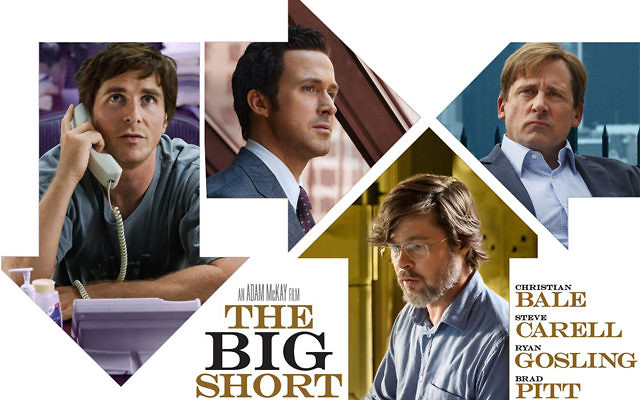Big Lessons in ‘The Big Short’
By Al Shams
This year’s Oscar winner for best adapted screenplay, “The Big Short” has been available on DVD since mid-March, and I have seen it three times. Friends have asked me as an investment professional to explain various aspects of the movie.
The Great Recession affected all aspects of the financial world and created great social disruption. “The Big Short” focuses on a single aspect of the crisis: the decline in the value of mortgage securities and how three astute speculators profited from the decline.
In general, the film shows how those three unrelated oddball investment managers in 2006 and 2007 came to believe that the mortgage process was corrupted, that a bubble was brewing in housing, and that they could profit from a general decline in housing prices.
Before 2008, it was commonly believed that homes were a sacred investment for most Americans and that a major nationwide decline in housing prices was unlikely.
While I am not an expert in mortgage securities or housing, I do believe I have a good background in finance and insight into the movie.
Some of the movie’s key points:
- In the 1970s, investment banks created mortgage-backed securities, which increased capital in the housing industry and provided attractive products for investors. These securities were very liquid, carried high investment ratings and offered compelling yields.
- As is often the case on Wall Street, an initial good idea became too popular, which led to abuses, greed and lax standards by some participants.
- As the demand for the securities grew, some fraudulent and criminal actions permeated the system, especially in the area of applications.
- Various financial data were false and never verified. Many participants knew of the false data but were profiting so much from the process that they were reluctant to sound the alarm.
- The rating system was compromised when investment bankers selected the ratings agencies and were compensated by issuers. If the desired ratings were not received, that rating agent likely would not be selected in the future.
- Many people were seduced by the prospect of quick and easy profits from flipping homes. Many flippers ended up with mortgages on multiple homes without the ability to hold them through a downturn — hence, foreclosures. Astute investors make sure they can hold assets through a downturn before making an investment.
- Many financially naïve people, desperate to own a home and to profit from rising home prices, submitted false applications and suffered from the ensuing downturn.
As an example of the problems in the housing industry, the movie depicts an adult entertainer in Miami who owned five properties, each with two mortgages.
The three speculators approached some well-known investment banks to assist them in shorting mortgage securities. The investment banks, believing that a decline in mortgage securities was unlikely, took the other side of the trade and put their capital at risk.
Ultimately, the investment banks suffered huge losses, and the speculators had gains worth five to 15 times the capital they put at risk.
I enjoyed the movie and felt it was a good summary of how these three groups identified the housing bubble and profited when it burst. As we all know, the nationwide housing price decline had huge implications for other parts of the economy and required unprecedented action by the government and regulators.
Al Shams is a Sandy Spring resident, a former CPA and an investment professional with more than 36 years’ experience.




comments